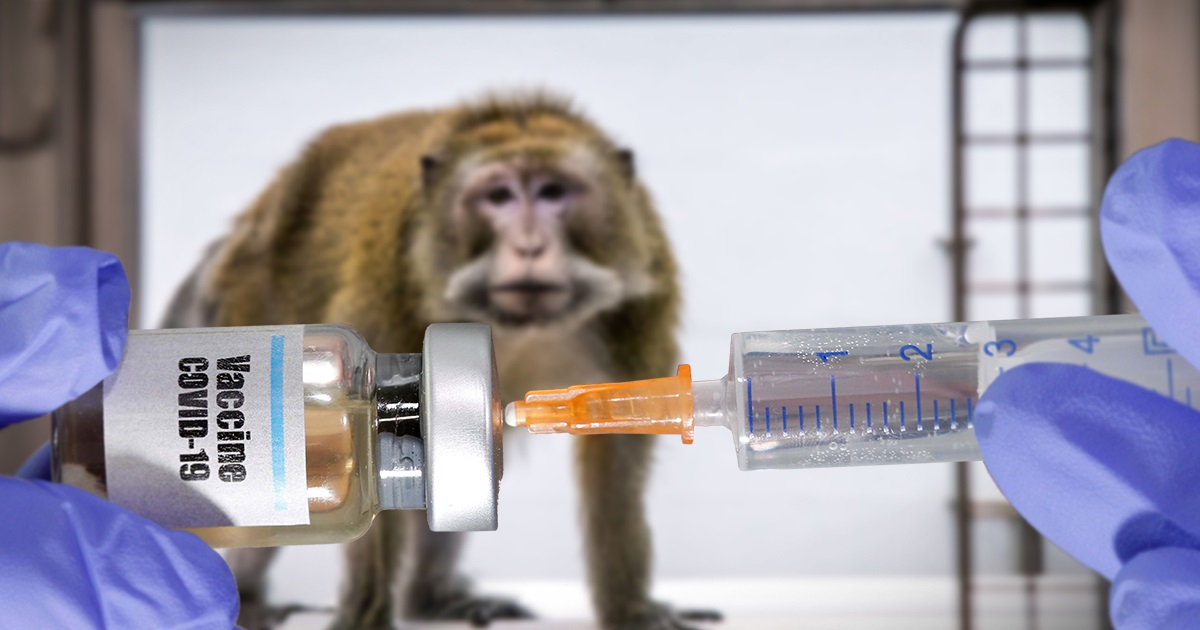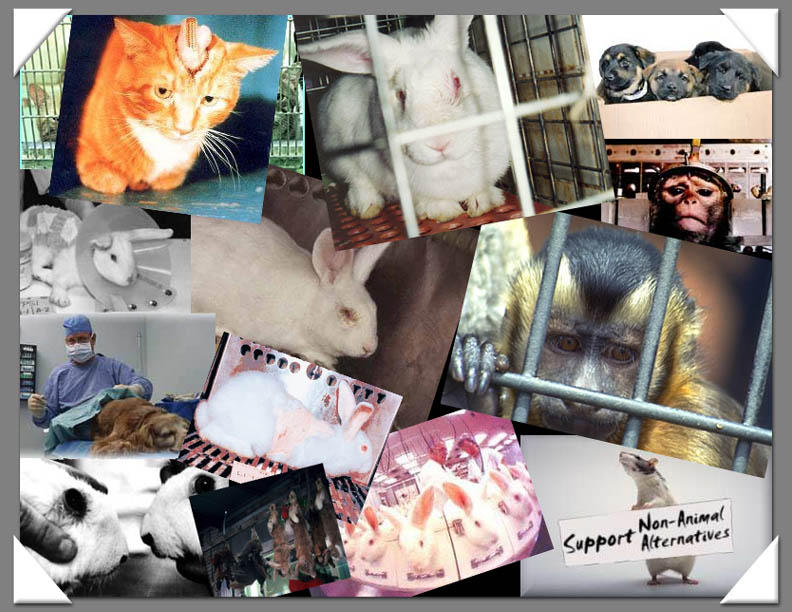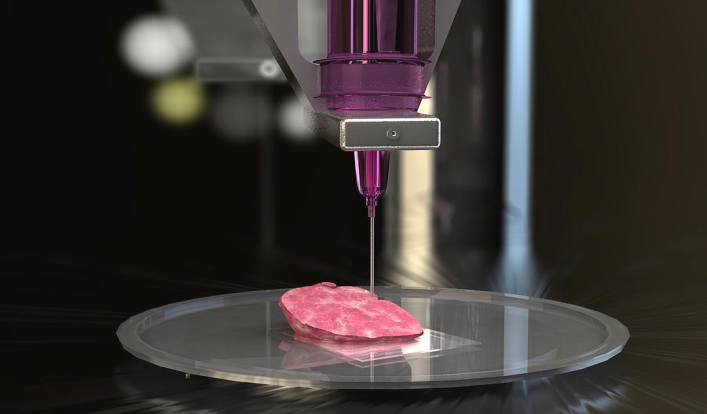GS 3 - Science and Technology
Why in the news?
The Government passed an amendment to the New Drugs and Clinical Trial Rules (2023) with the objective of discontinuing the utilization of animals in research, particularly in the testing of drugs.
Introduction
When it comes to introducing a new drug into the market, a careful journey is undertaken to ensure its efficacy and safety. This voyage involves a series of tests that unveil whether the potential drug can effectively combat the targeted disease and if there are any hidden hazards lurking within. Traditionally, the initial step in this expedition involved subjecting the drug to animal trials, utilizing species ranging from mice and rats to dogs and primates.
However, a recent amendment in the New Drugs and Clinical Trial Rules (2023) has ushered in a welcome transformation. This change equips researchers with the opportunity to explore innovative avenues that exclude animals from the testing equation. Instead, they can harness novel methodologies such as 3D organoids, organs-on-chip, and cutting-edge computer simulations.
These alternatives provide avenues to evaluate new drugs' safety and effectiveness without relying on traditional animal experimentation. This pivotal shift represents a leap toward more humane drug development that aligns seamlessly with the advancements of contemporary science. In this blog, we look forward to unraveling the notion of non-animal testing and its profound impact on shaping the future of medicine.
Why the Change?
Reasons Behind the Shift are as follows:
- Human Complexity: The decision to move away from animal testing in drug development stems from recognizing the intricate nature of humans. Unlike lab animals, humans exhibit diverse biological processes and responses that can vary greatly based on factors such as age, gender, genetics, health conditions, and even diet.
- Mismatch and Failures: The controlled environment of lab animals often results in a discrepancy between their responses and those of humans. Drugs that show promise in animal tests frequently falter during human clinical trials, the final stages of drug development. Despite significant investments in the pharmaceutical sector, this persisting issue highlights the limitations of relying solely on animal testing.
Embracing New Avenues:
- Human-Relevant Models: Researchers are increasingly turning to alternative methods that provide a better understanding of human biology and responses. These methods go beyond traditional animal testing and embrace innovative approaches such as 3D organoids and computational simulations.
- Enhancing Accuracy: By adopting these advanced techniques, the aim is to enhance the accuracy of drug development. These alternatives offer a more precise prediction of how drugs will interact with the complex human system, ultimately improving the success rate of new drugs in clinical trials.
The Shift's Impact
- Human-Centered Approach: This shift signifies a transition towards a more human-centered approach to drug development. It aligns with modern scientific advancements and acknowledges the need to address the inherent complexities of the human body.
- Ethical and Scientific Progress: The move away from animal testing reflects an ethical and scientific advancement. It promotes a more humane approach to drug development and underscores the importance of leveraging cutting-edge technologies to achieve safer and more effective medications.
Which animals are prone to drug testing?
Globally and in India, various animals are commonly used for human drug testing. Each species serves specific purposes due to their biological similarities to humans. Here are some examples:
- Rodents (Mice and Rats):
Reason: Rodents have a similar genetic makeup to humans and reproduce quickly, making them ideal for initial testing and genetic studies. They are used to understand basic biological responses to drugs.
- Dogs:
Reason: Dogs' anatomy, physiology, and organ systems closely resemble those of humans. They are used for cardiovascular and respiratory system studies, as well as toxicity assessments.
- Primates (Monkeys and Apes):
Reason: Primates share genetic and physiological similarities with humans, making them crucial for testing drugs that may impact complex systems like the nervous system. Their use is limited due to ethical concerns and the high cost of maintenance.
- Pigs:
Reason: Pigs have organs and systems that closely resemble humans. They are used for surgical and medical research, and for studying the effects of drugs on gastrointestinal and cardiovascular systems.
- Rabbits:
Reason: Rabbits have sensitive eyes that are used for eye irritation and allergic reaction tests. They are often used for cosmetic and pharmaceutical testing related to ocular effects.
- Fish and Amphibians:
Reason: Fish and amphibians are used for toxicity studies due to their simple biological systems. They help in understanding the effects of drugs on aquatic ecosystems.
What are the Alternatives?
In recent decades, scientific advancements have led to the development of innovative methods that aim to replace traditional animal testing in drug research. These alternatives utilize human cells and cutting-edge technologies to create more accurate models for testing the safety and efficacy of new drugs.
- Organoids and Mini-Organs: One significant breakthrough involves the creation of 'organoids' or 'mini-organs.' These three-dimensional cellular structures are designed to mimic specific organs in the human body. By utilizing human cells and stem cells, researchers can replicate the complex interactions and responses of human organs, offering a more relevant testing environment.
- Organ-on-a-Chip Technology: Another revolutionary approach is the use of 'organ-on-a-chip' technology. These small chips, roughly the size of AA batteries, are lined with human cells and connected to microchannels that simulate blood flow. This enables researchers to study tissue-tissue interactions, as well as the chemical and physical signals that occur within the body.
- Bioprinting Techniques: Additive manufacturing techniques have also played a vital role in advancing alternative testing methods. In 2003, researchers developed the inkjet bioprinter, which modifies a standard inkjet printer to create biological tissues. This bioprinting process uses human cells and specialized fluids as 'bio-ink' to construct intricate tissue structures.
The Collective Impact
These advanced systems collectively promise to reshape drug design and development. By utilizing patient-specific cells, they have the potential to personalize drug testing, accounting for individual variations in response. This move towards more human-relevant testing methods not only aligns with ethical considerations but also addresses the limitations of animal testing. As these technologies continue to evolve, they hold the key to a more accurate, efficient, and humane approach to drug research.
What is the status globally?
Around the world, regulatory bodies have recognized the need for a transition towards more humane and effective methods in drug testing. These regulatory changes reflect a growing acknowledgment of the limitations of animal testing and the potential of alternative technologies that provide more accurate insights into human responses to drugs.
- European Union (EU): In 2021, the European Union took a significant step by passing a resolution outlining an action plan to promote the adoption of non-animal methods in research, regulatory testing, and education. This strategic approach emphasizes the importance of embracing advanced technologies to replace traditional animal-based approaches.
- United States: The United States made strides in this direction with the passage of the FDA Modernization Act 2.0 in December 2022. This legislation enables researchers to use innovative systems, such as organoids and organ-on-a-chip, to assess the safety and efficacy of new drugs. This move not only aligns with the ethical considerations but also recognizes the scientific advancements that have enabled more human-relevant testing.
- South Korea: South Korea showcased its commitment to embracing alternative testing methods with the introduction of the 'Vitalization of Development, Dissemination, and Use of Alternatives to Animal Testing Methods' bill in December 2022. This initiative highlights the nation's endeavor to create a more advanced and responsible approach to drug testing.
- Canada: In June 2023, Canada took a significant regulatory step by amending the Environmental Protection Act. This amendment aims to replace, reduce, or refine the use of vertebrate animals in toxicity testing. This move reflects a broader shift towards considering alternatives that balance scientific accuracy with ethical considerations.
- India: India, too, recognized the potential of alternative testing methods and their alignment with ethical and scientific principles. In March 2023, the government amended the New Drugs and Clinical Trials Rules 2019. This step was taken after seeking input from the public and consulting with the Drug Technical Advisory Board—a pivotal body that advises Central and State governments on drug-related technical matters.
As nations increasingly embrace these advanced technologies and regulatory frameworks, the landscape of drug development is evolving towards a more compassionate, effective, and human-centered approach. This global shift reflects not only the potential of alternative methods but also the collective commitment to advancing science while respecting ethical considerations.
What are the challenges ahead?
The adoption of organ-on-a-chip technology in drug testing and research presents promising opportunities, but it also comes with a set of intricate challenges that require multidisciplinary efforts and innovative solutions.
- Complex System Development: Crafting a functional organ-on-a-chip system demands a convergence of diverse knowledge domains. Experts in cell biology must replicate intricate cellular behaviors in a lab environment. Materials science experts need to identify materials that seamlessly integrate with biological processes. Fluid dynamics expertise is essential to simulate blood flow within microchannels. Electronics play a role in integrating biosensors that gauge pH, oxygen levels, and more. Engineering input is crucial to design the chip, while pharmacology and toxicology experts interpret drug actions within the chip.
- Resource Constraints: The majority of reagents, cell culture materials, and instruments required for organ-on-a-chip technology are presently imported from countries like the U.S., Europe, and Japan. Filling this gap and building a comprehensive ecosystem for research and development necessitates investments in various sectors, including cell culture, material science, and electronics. Developing a self-reliant ecosystem within India is a significant opportunity.
- Data Variability: The intricacies of organ-on-a-chip systems are magnified by the variability in data resulting from differing laboratory protocols and expertise. For instance, while one lab might focus solely on liver cells, another lab might incorporate immune cells into their liver-on-a-chip system to study both the immune and liver systems. This diversity means that a standardized or universally applicable liver-on-a-chip model, capable of studying all liver diseases, remains an elusive goal.
The Way forward
The following areas must be focussed upon and a mission mode approach should be adopted at the national level.
- Organ-on-a-Chip Expertise: Orchestrating organ-on-a-chip systems necessitates multidisciplinary prowess, from cell biology to material science, fluid dynamics to electronics integration. Collaborative efforts are pivotal to harness their potential.
- Indigenous Resource Growth: Elevating self-sufficiency in cell culture, material science, and electronics is key. Reducing reliance on imports can fortify research and development capabilities.
- Tackling Variability: Adapting organ-on-a-chip models for specific research demands acknowledges variability across labs. Flexible interpretations are vital for personalized approaches.
- Collective Synergy: Multi-stakeholder collaboration across academia, industry, government, and regulations is paramount. Unified efforts navigate complex landscapes while ensuring safety and efficacy.
- Guideline Evolution: As non-animal methods mature, regulatory guidelines must evolve. Embracing cell-based and gene-editing advancements aligns regulations with innovation.
- Interdisciplinary Training: Equipping professionals with interdisciplinary skills bridges the gap. Nurturing expertise empowers India's position in this transformative journey.
By uniting expertise, bolstering indigenous resources, and recalibrating regulations, India can revolutionize drug testing, advancing ethical, precise, and impactful healthcare research.


